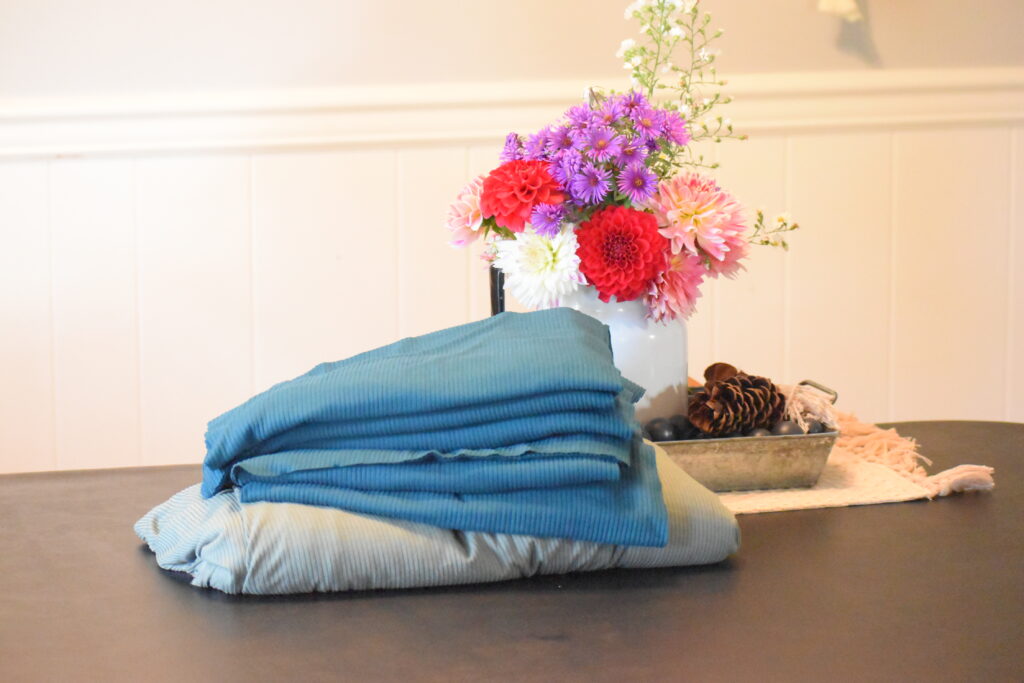
Learning to sew may seem a bit daunting but with 25 Easy Tips for a Budding Seamstress, you’ll be sewing like a pro in no time. These tips definitely aren’t the only things that are helpful but with these tips you will be able to get a good start on your sewing projects. 25 Easy Tips for a Budding Seamstress is for a beginner by a beginner. I am so excited to share what I learned. I hope it helps you too!
Always have some scrap fabric on hand to practice with before you start your actual project. These scraps come in handy when trying out a new stitch or simply familiarizing yourself with the machine. You can also make cute little projects entirely out of scrap pieces instead of wasting all that fabric.
75+ Scrap Fabric projects https://www.scatteredthoughtsofacraftymom.com/scrap-fabric-projects/
When trying out your skills, you want cheap fabric so you’re not afraid to mess up. There are so many great places you can shop online. With a little searching around, you can find countless stores with any fabric to suit your needs. The ones linked below are some of my favorites and I definitely recommend them to you.
3 Cheap Online Fabric Stores
https://fashionfabricsclub.com/
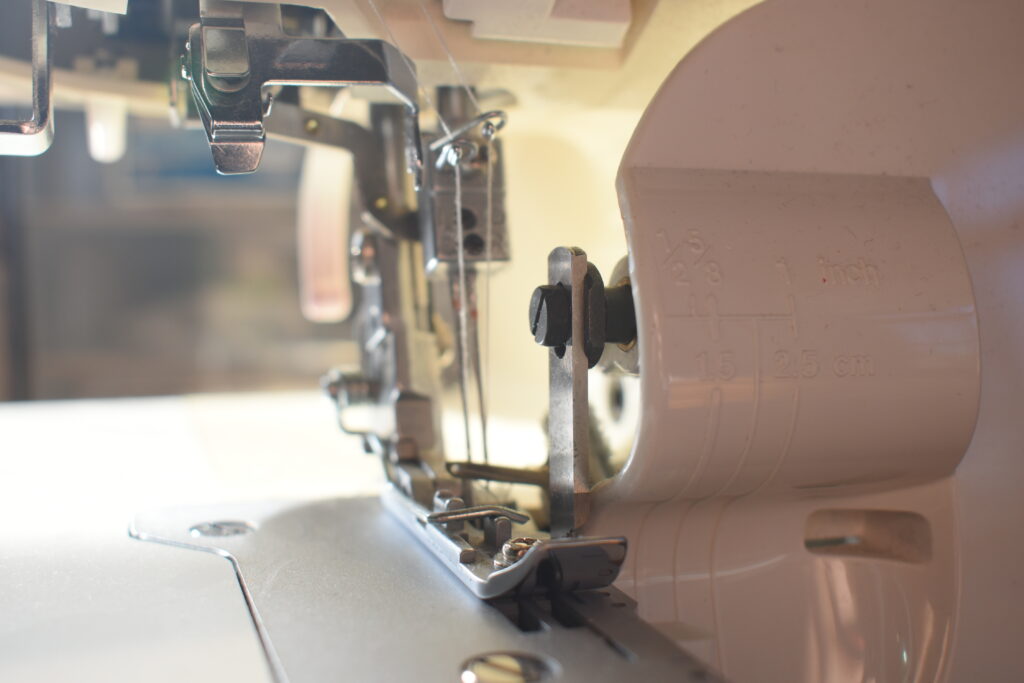
Before you do any sewing you need to know your machine well. Most machines come with a user’s manual and guide. If you got your machine second hand and didn’t get a manual, you can usually look up the company online and find out what you need to know.
Another way to learn your sewing machine is to sew with scrap fabrics. This gives you the ability to use different stitches, thread tension, and use your presser foot.
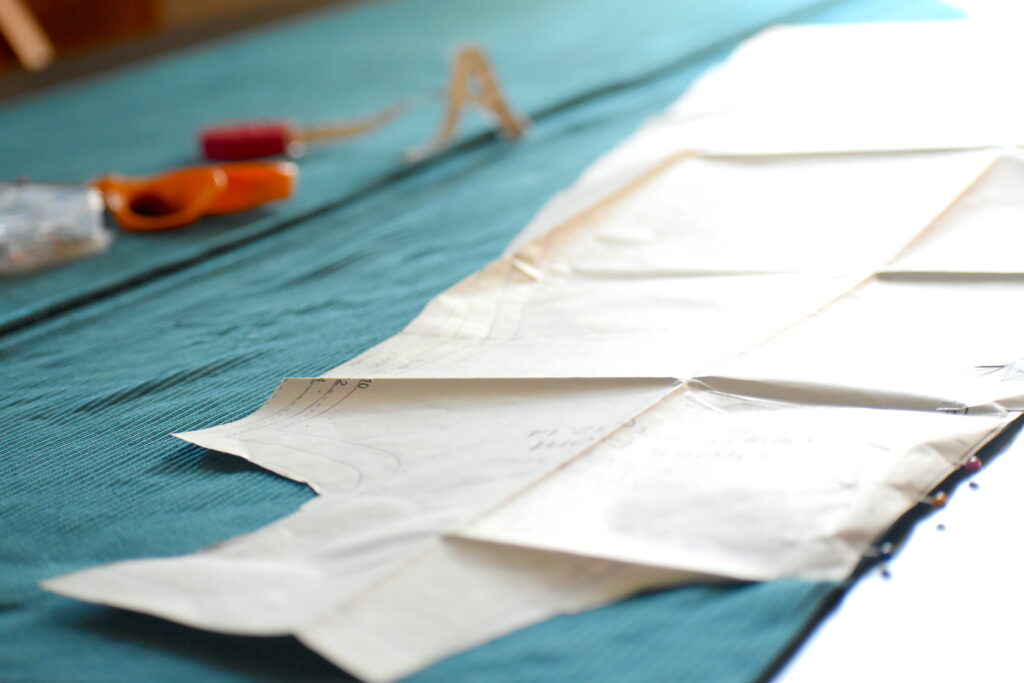
As a new seamstress, patterns may seem hard to understand. Learn to read patterns well before you do any big sewing projects. Know what it means to cut on the fold of the fabric. Understand the best way to lay the pattern on the fabric for the fabric’s best stretch.
Yes, this one sounds like an obvious but it’s always easy to jump ahead and forget to look at the directions. Whether you are reading a pattern or following a tutorial online, make sure you check all the directions to be sure you know everything before you start.
Sometimes it just helps when other people can explain something to you. Youtube has so many great tutorials for learning to sew. Not only can you get a video to go over all the basics, you can also search a certain project that you want to do and get step by step instructions the whole way through.
Beginners Tutorials on Youtube:
https://www.youtube.com/@TheSewingChannel
https://www.youtube.com/@SeamworkVideo
This is a big one for me! So many knit fabrics are hard to sew and can make any beginner depressed in no time. Start out with 100% cotton fabric or something close. From experience, cotton is so easy to sew and is very kind to beginners!
When sewing cotton, remember that it will fray. If you are doing a cotton project that you would like to last a long time, make sure you do a zig-zag stitch along the edge of the fabric to keep it from fraying.
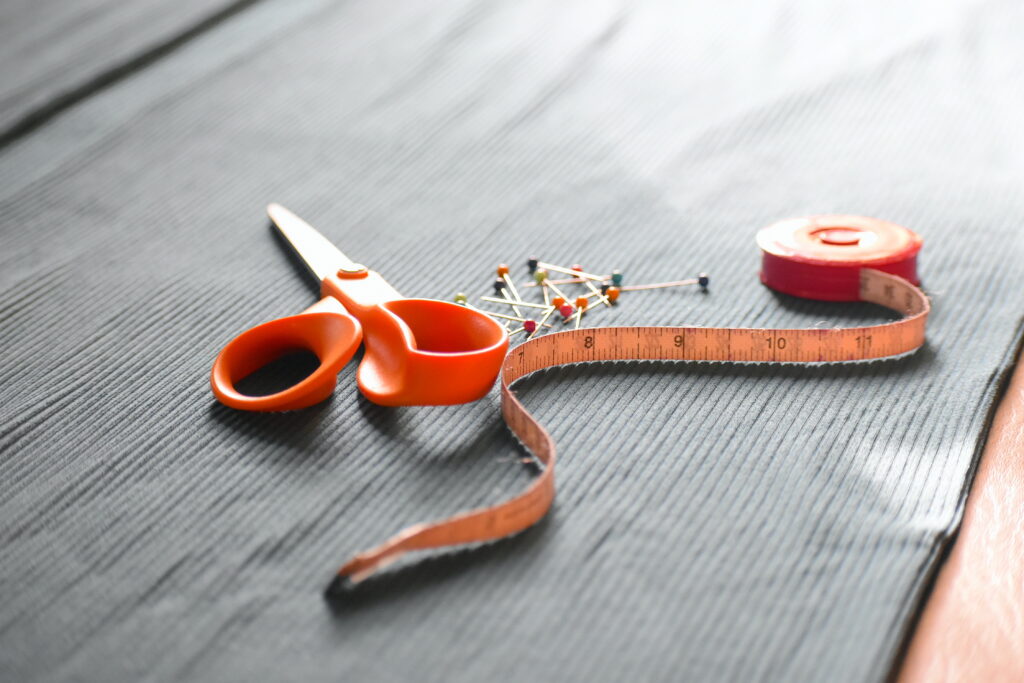
Make sure your sewing scissors is sharp and make sure you have a good sewing scissors. A dull or cheap quality scissors takes twice as long to get the job done and doesn’t cut a clean edge. To sharpen a dull scissors, you can use sandpaper (between #180-#220), a knife sharpener, or a steel wool soap pad.
Get your own sewing scissors here!
To buy the sewing scissors shown on the image above, click here.
It wouldn’t be fun to pull your brand new project out of the washer and find out that it’s shrunk! To ensure this doesn’t happen, wash and dry your fabric first before you do any cutting.
Make sure you wash the fabric according to the instructions. If there were no instructions on how to wash the fabric, look it up to see how it should be washed. Some fabrics are more finicky than others.
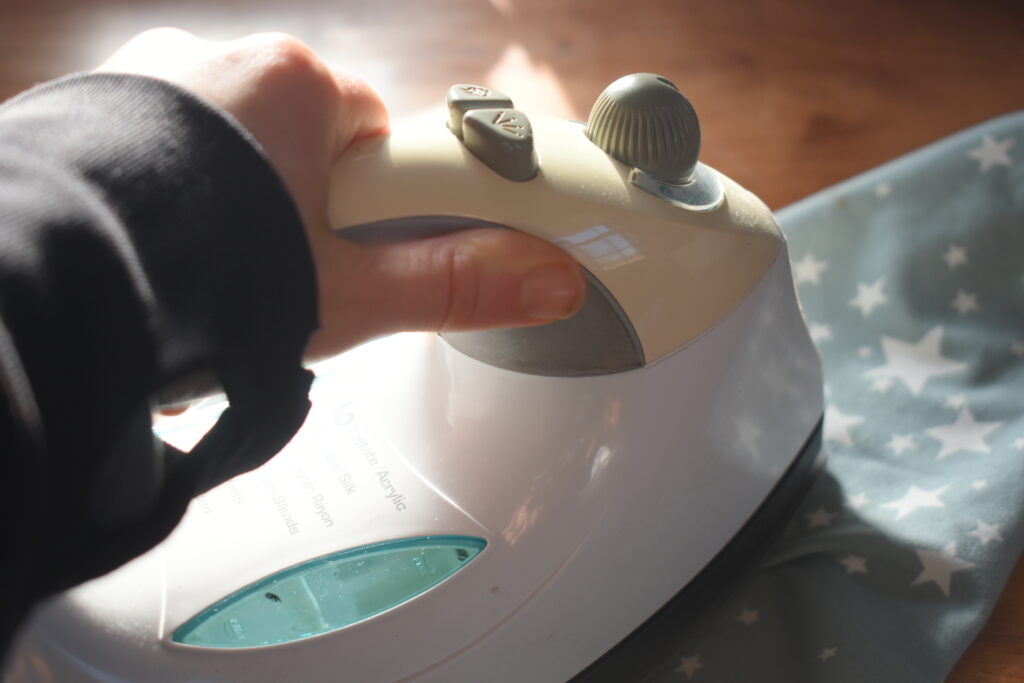
Depending on what fabric you use, you will need to iron it before you sew and after the project is finished. Having a good quality iron and knowing how to use it is essential. If you’re looking for a good quality, good priced iron, Amazon has many options. Make sure you read the description before you buy so you know exactly what you’re getting.
This link will take you to a website that explains how to iron different kinds of fabrics.
I can’t stress this one enough! This was and is one of my shortcomings :). Never try to rush through a sewing project, it just ends in disaster. Measure once and then measure again, maybe even a third time. When you cut, be precise and careful. Don’t be afraid to take it slow and be a perfectionist.
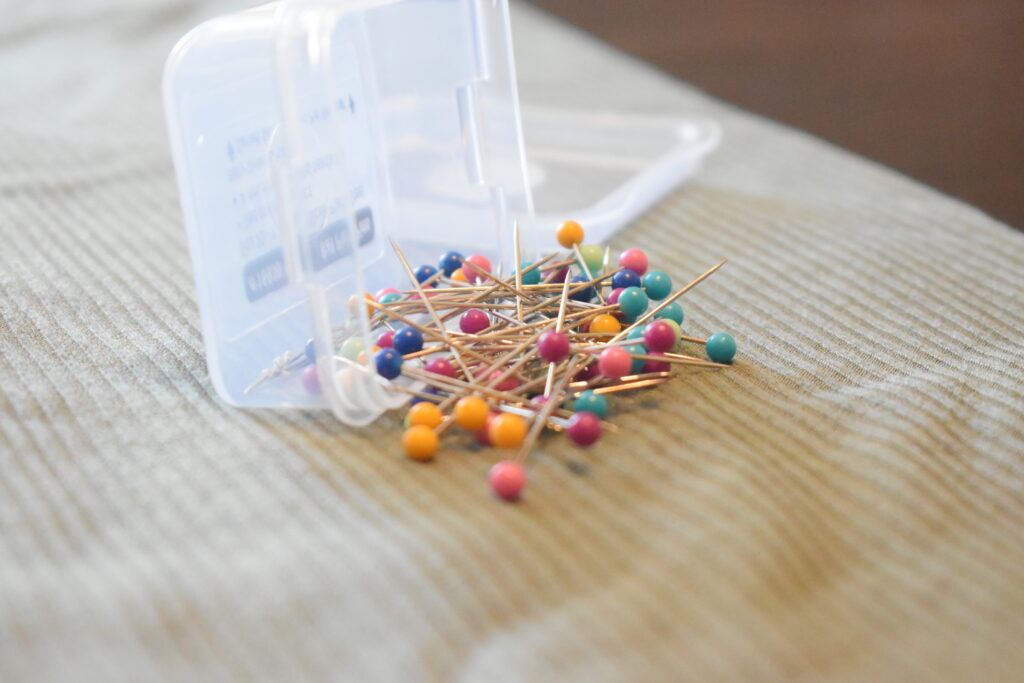
For precise lines and accurate measurements, always use pins. I would suggest pins or clips for beginners but once you are experienced weights are very nice and easy to use. I love the pins with round colorful heads (like are shown above). They are easy to see and easy to put in and pull out.
Buy your own Sewing Pins, Sewing Clips, and Sewing Weights.
While this isn’t essential, it does make things easier. No one likes a pin in their foot so make sure to run your magnet over the rug before cleaning up your sewing area! You can find a wide selection of sewing magnets on Amazon.
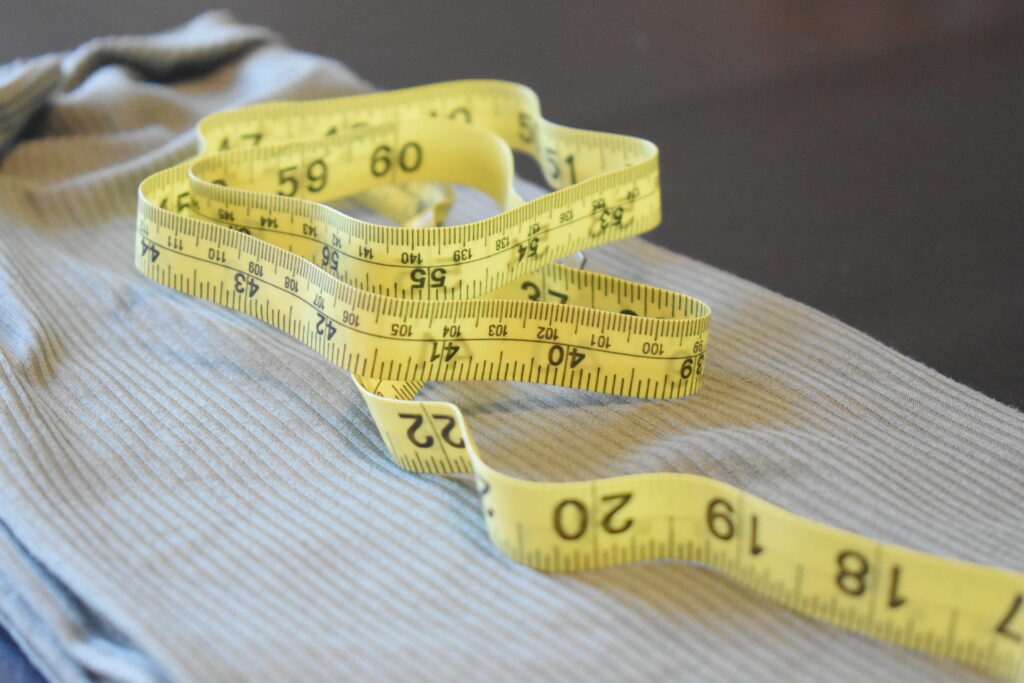
Sewing tapes are a great way to measure your fabric or yourself. They are flexible and easy to store.
This isn’t a MUST DO but it definitely helps. Hand-stitching gives you a feel for a needle and thread. Once you can hand stitch, you can easily sew on buttons or stitch up a little mistake without your machine. If nothing else, hand stitching gives you an appreciation for your sewing machine!
If you’re not doing a fancy project that needs special stitching, it is easiest to learn with a straight stitch. It allows you to focus more on guiding your fabric and less on the stitch itself.
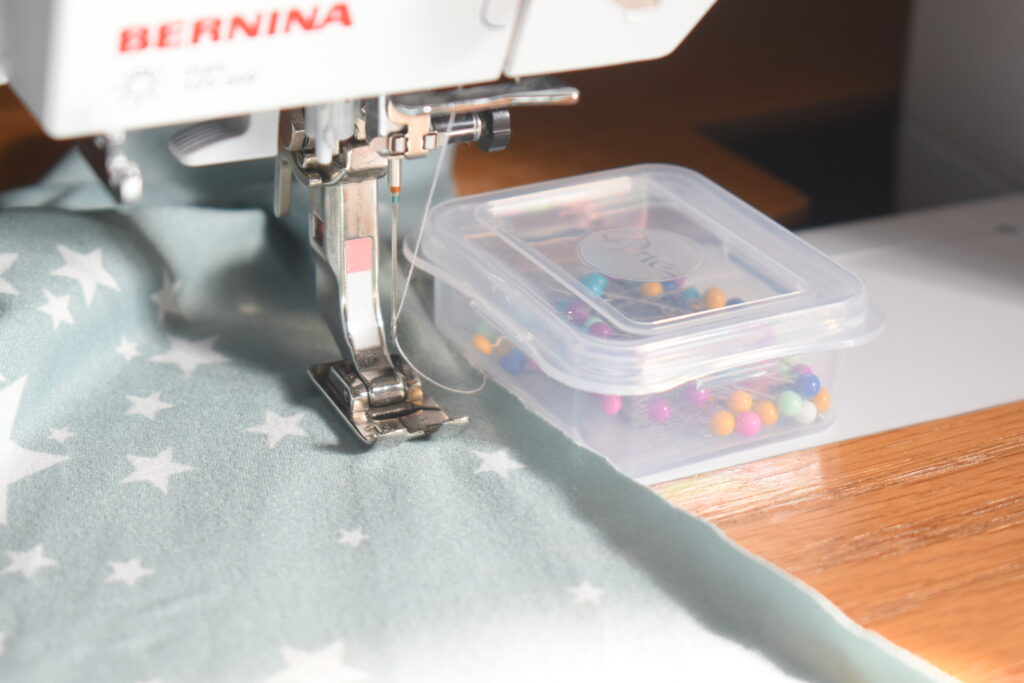
Make sure you can sew straight lines before you start any big projects. Grab a scrap piece of fabric and sew lines until you have it mastered. To get yourself on the right track, get an object and set it on your machine to guide your fabric along. (like shown above)
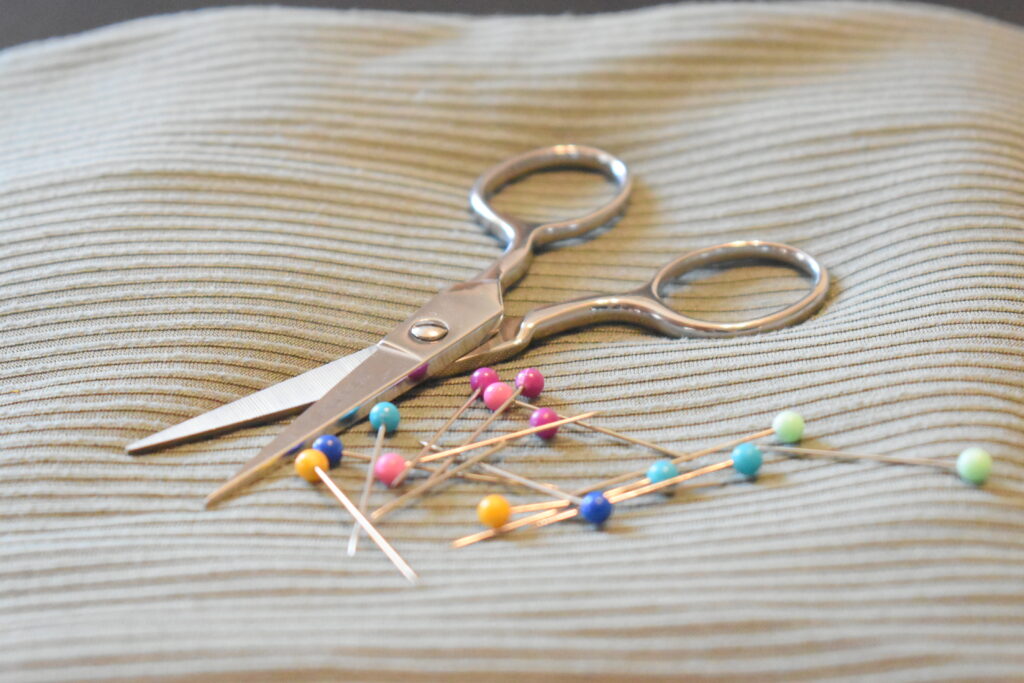
A thread snipper or scissors is a handy tool for cutting in tight places. This makes it easy to snip thread, loose ends, and make small fabric cuts.
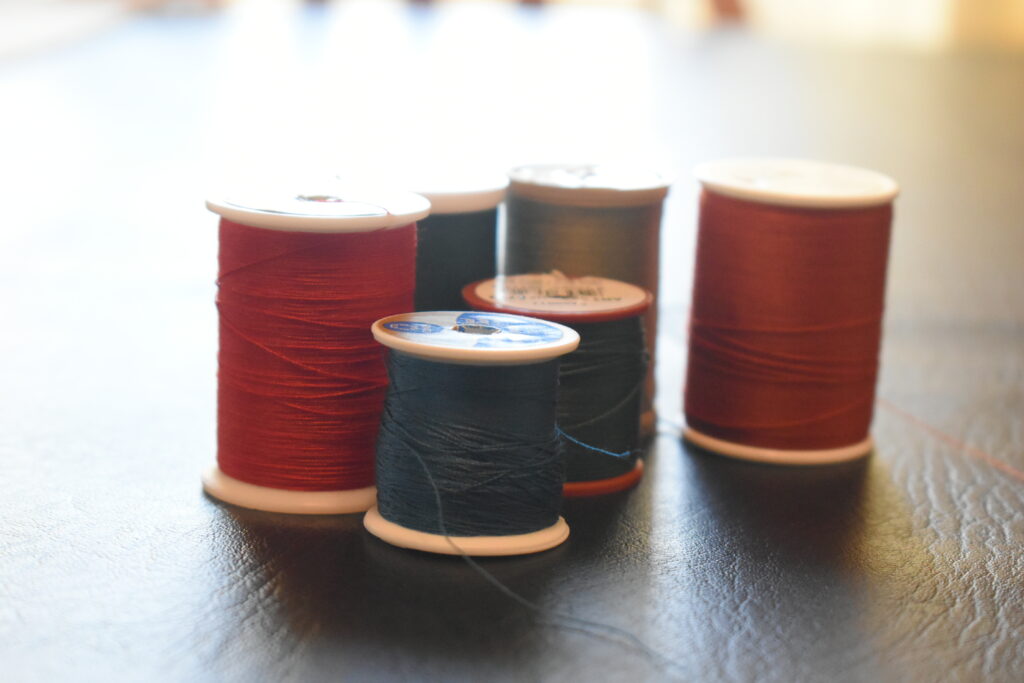
There are lots of different threads and it is easy to mess them up. Make sure you are using fabric thread and not thread for sewing buttons. Depending on what fabric you use you may have to use a different weight of thread. Usually, on the top of the spool of thread it says what the thread is used for.
For a wide variety of sewing thread and colors, click here.
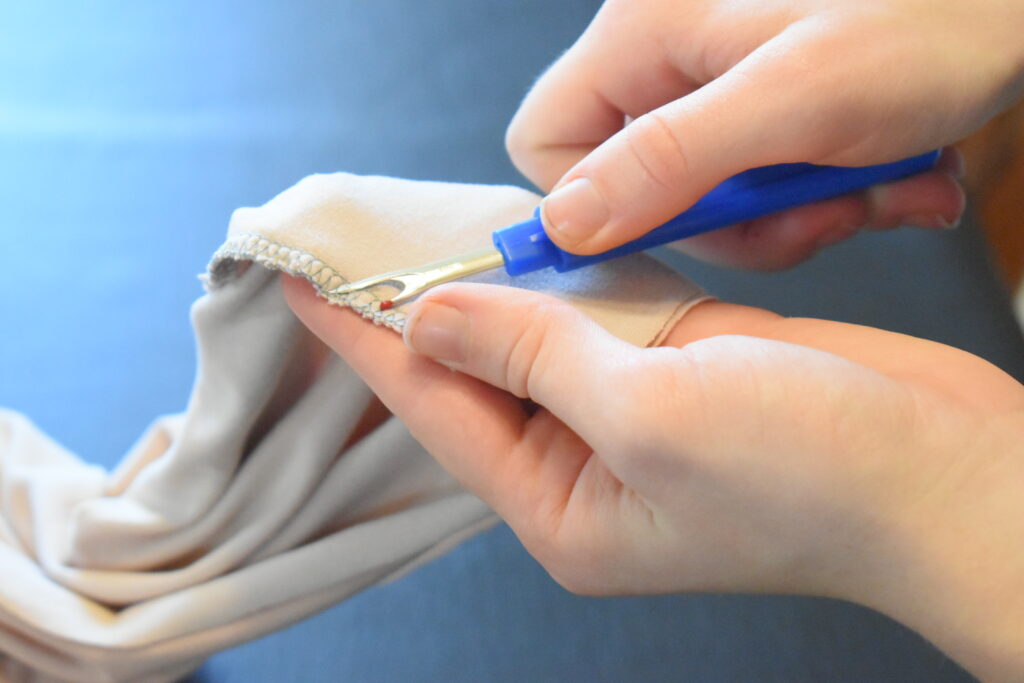
Seam ripping won’t be your favorite job but you will definitely have to do it sometimes! Get yourself a good seam ripper and learn how to use it quickly and easily. For ripping seams make sure to go very slowly especially when ripping seams from knit fabric because it is very easy to accidentally rip the fabric.
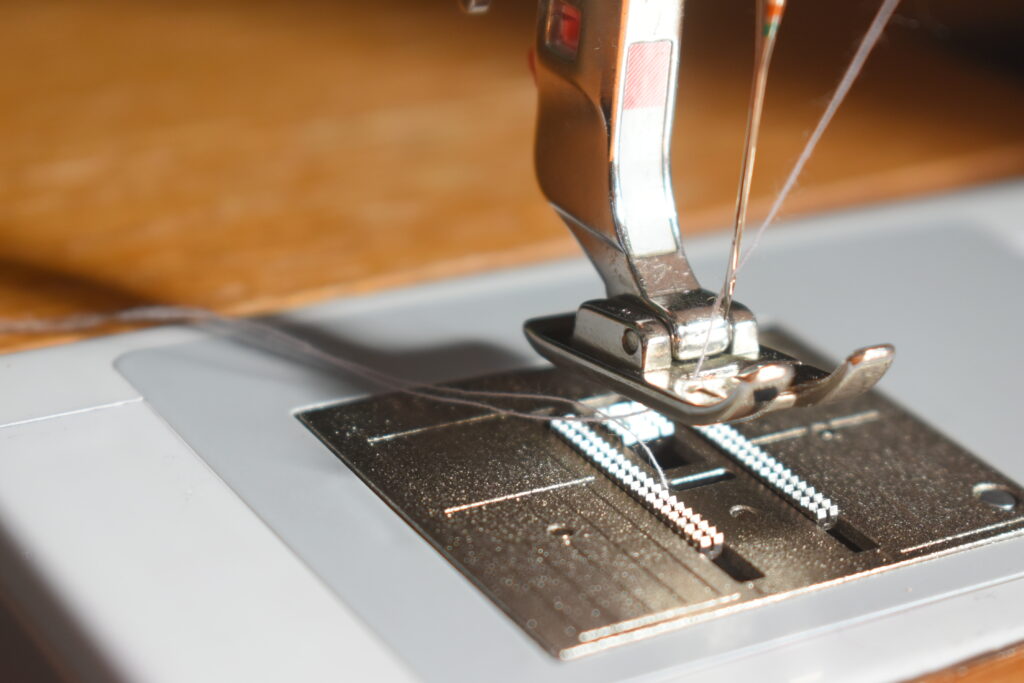
Loose threads can easily get in your way when sewing. To keep this from happening, push the two loose threads to the back of the machine before starting your seam. (like shown above) Also, make sure they are long enough so they don’t get wrapped around the presser foot.
This is especially essential depending on what fabric you are using. When sewing cotton, denim, soft linens, and other fabrics that fray, make sure to do a zigzag stitch at the edge of the fabric to keep it from fraying.
A neckband is an easy way to make a dress or shirt look professional. Look up a tutorial for sewing a neckband and practice it before trying it on a project.
Tutorials
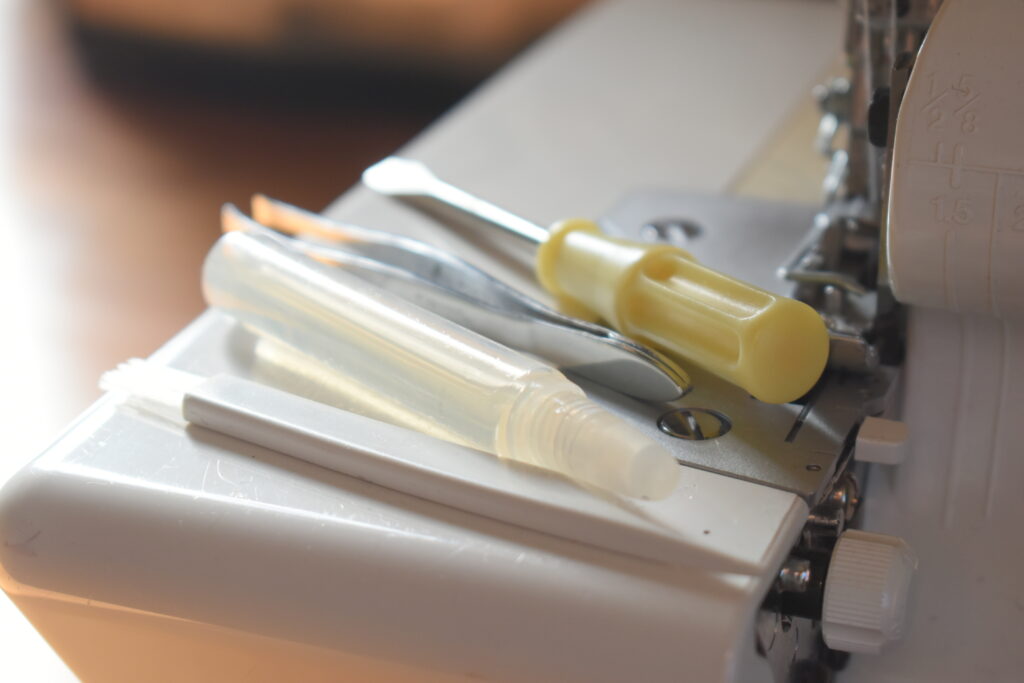
Read the user’s manual to learn how to clean your machine. This will make your machine last much longer. If you don’t have any tools to clean your machine, get an old toothbrush or paintbrush and gently brush the fabric dust off of the gears inside the machine. If you have any sewing machine or serger oil apply it as it tells you to in the user’s manual. You won’t have to use the oil very much.
If you’re just starting out, give yourself lots of room to figure things out and make mistakes. Sewing is a fun hobby and with a little practice, you’ll be sewing like a pro! I hope these 25 Easy Tips for a Budding Seamstress helped you with some of your questions today!
25 Easy Tips for a Budding Seamstress is a blog meant to help you on your way to becoming a professional. These are just a few of the things I learned along the way that I hope help you too.
I started https://ekatijoy.com with small sewing projects like headbands and scrunchies. From there I explored the varieties of dresses and began sewing them soon after. I encourage you to learn how to sew as it is a very useful skill and can be a fun hobby as well. Just start small and work your way up. You’ll soon be sewing your own outfits!
Happy Sewing! ~Katara Nolt Founder of Ekati Joy